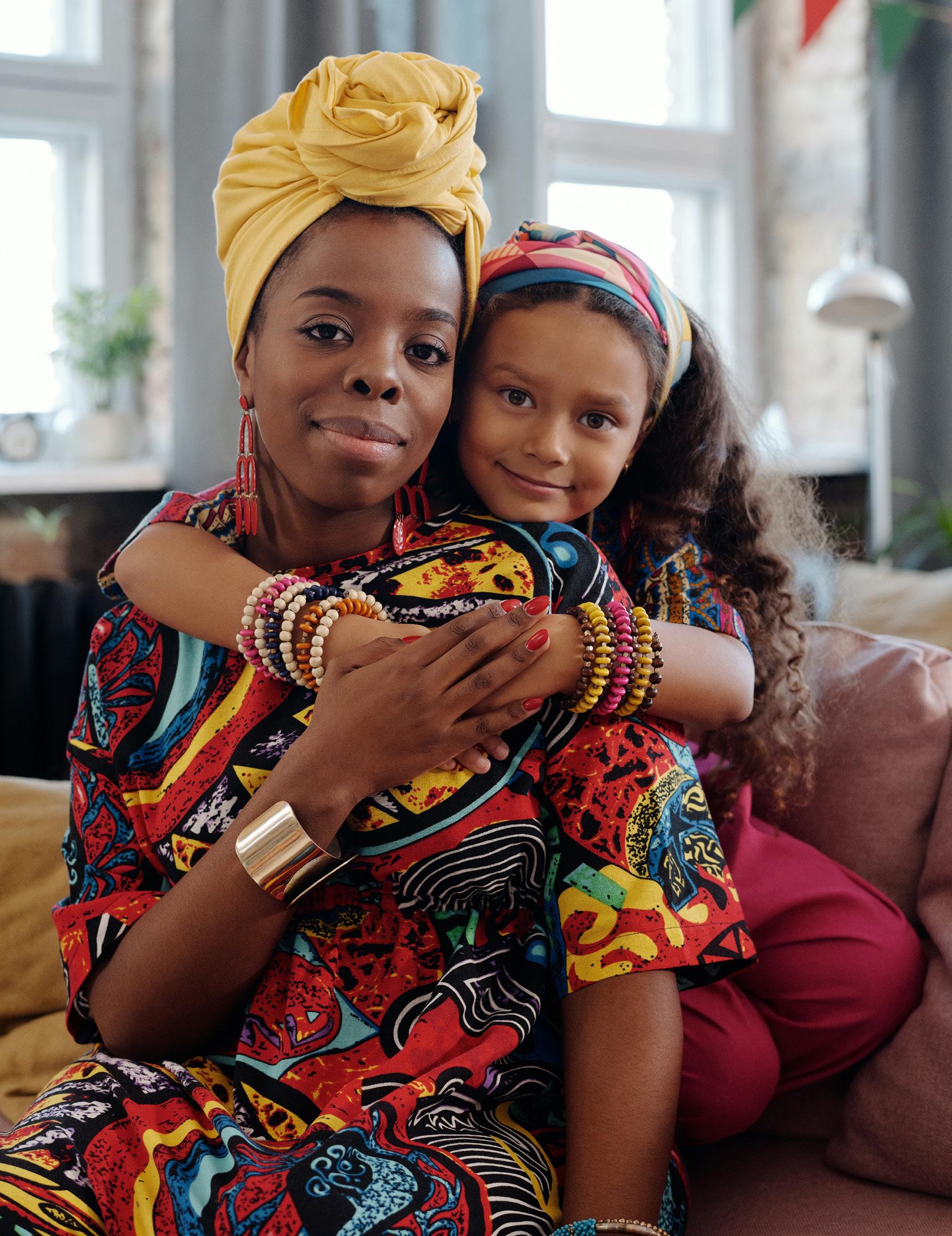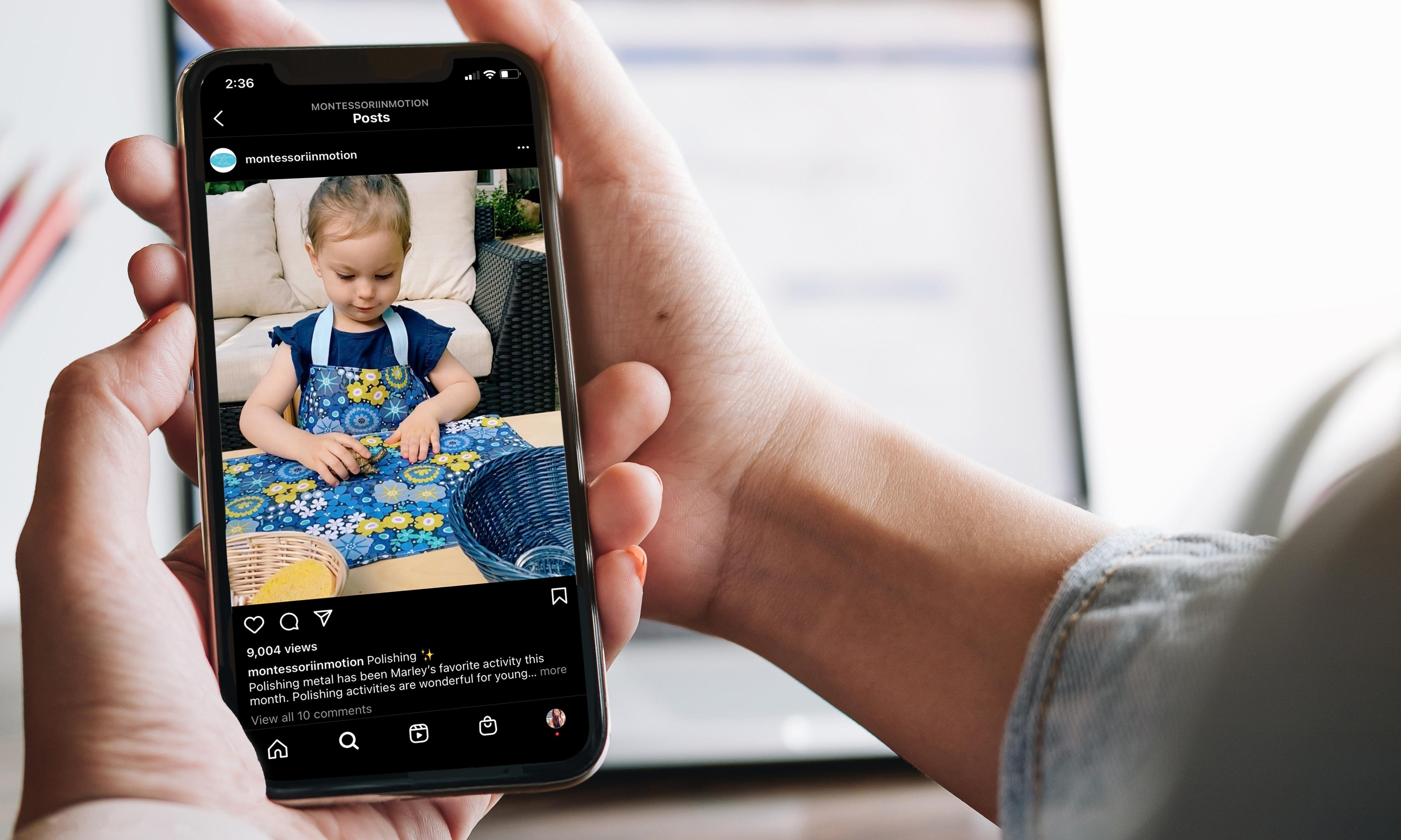DEVELOPING ATTENTION SPAN VIA
Polishing by Julia Volkman
This article describes the benefits of polishing by deconstructing the actions of a child at work documented by an instagram video. You can view the post here: https://bit.ly/3qgG7op
P
arents often ask Montessori teachers why their children are learning so much about cleaning at school. Their children are learning how to wash dishes, sweep the floor, dust, and even polish silver. Can’t the school afford to hire their own cleaning staff? The answer has nothing to do with keeping the classroom clean. In fact, teachers often have to go back after school and “re-clean” what the children have cleaned. The reason we teach them these “practical life” activities is all about aiding the child’s development. A mom I know on Instagram (big shout out to @montessoriinmotion) posted a video of her daughter that illustrates some of the benefits of practical life activities. It’s just over one-minute long and is so rich in things to notice that I asked her permission to write about it here. Watch the video on your own first and then read on (and yes, she is sporting the matching Maitri Learning blue flower apron and mat). Focused Attention In the first few seconds, you can see that she couldn’t care less about the neighbor’s barking dog; she is very focused on her activity. She begins by setting up what she’ll need: the object to be polished (the turtle); the glass bowl (which will hold the polish); and the polish. While she is doing part of this, her eyes are fixed on the contents of the blue basket. She does not look at where she is placing the glass bowl. Why does this matter? It means that she has already learned how to place an object down with her hand (maintaining proprioceptive control) while her visual attention is focused elsewhere. So, when you think that where a child’s eyes are looking tells you what they are paying attention to, stop and think again!
8
Handedness Did you notice that she uses her left hand to pick up and lay out each of these items? But when she gets to the polish, she starts opening it using her right hand. She reconsiders, possibly remembering that she doesn’t need to open it yet (self-correction), and places it down. Next, she switches to her right hand to take out the remaining items she’ll need. When you see children choosing hands to work with at this age, you may see them switch from left to right, or you may see them strongly dominant already for the right or left hand. You don’t have to worry about it. When you present a lesson to them, just use your dominant hand, but if they struggle with that hand, simply say, “Maybe it will work better with your other hand. You can try it.” Pausing Once she has the polish on the mat, she pauses to organize her thinking. This pause is often a tricky spot for adults. We want to step in and make sure they know what to do next. But it is in the pause that so much great development happens (memory consolidation, toggling the default mode network, etc.). So, one of our biggest jobs is to restrain ourselves and give the child time to figure it out. Sensory Learning Now she uses her right hand to take out the sponge, cotton swab, and buffing cloth. As she takes out each one, she touches it an extra time as if to receive physical confirmation of what the object is. In neuroscience speak, we call this haptic engagement. She pushes down on the sponge and feels its spring. She uses the pincer grip to precisely place the cotton swab. She uses her whole hand to pat the buffing cloth. Each of these movements is different based on the properties of the object she
TOMORROW'S CHILD © § MARCH 2021 § WWW.MONTESSORI.ORG















